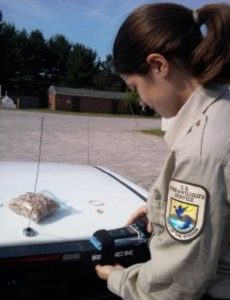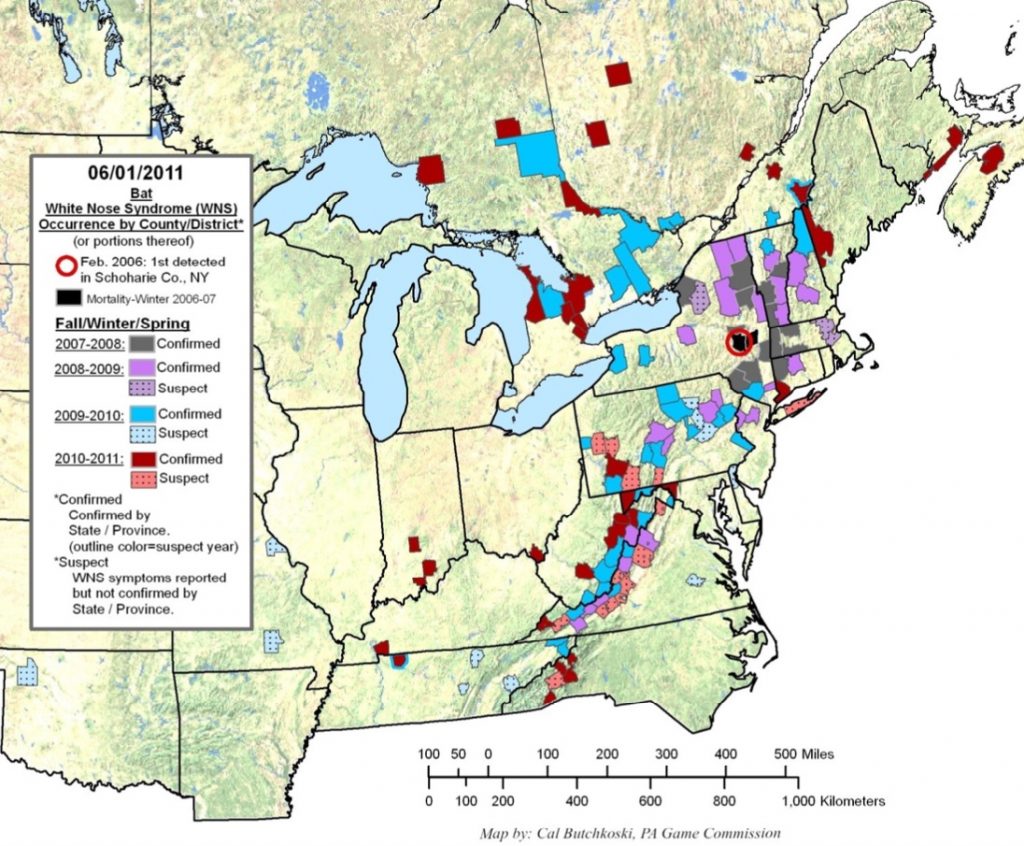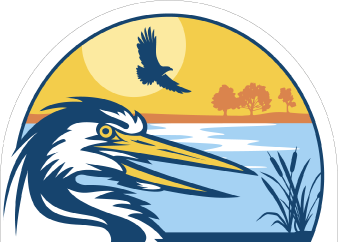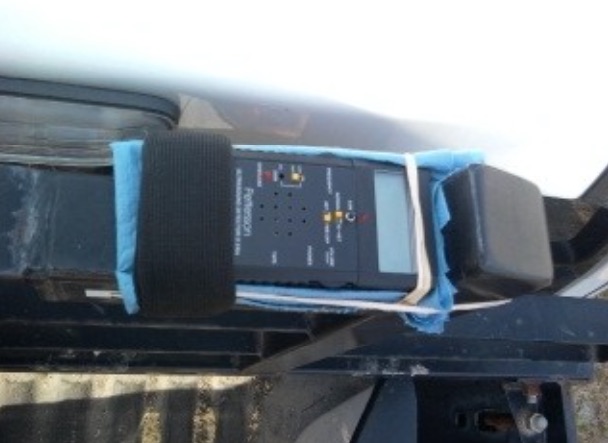
New York State is home to at least nine different species of bats including the northern bat, little brown bat, Indiana bat, hoary bat, big brown bat, red bat, and small-footed bat. This summer we decided to sample the bat species found on the refuge. Bats are nocturnal which means they hunt and feed on flying insects during the night. As an adaption for hunting at night, bats use echolocation to navigate through the trees and find prey. Each species of bat emits a unique ultrasound wave (very high pitched) that travels through the air and bounces off surrounding objects as an echo. Bats use the returning echoes to determine the distance, direction, size and shape of the object.
Using an ultrasound converter, we were able to record these high pitched sound waves. Since each species of bat emits a different sound frequency we can determine which bat species were recorded during the survey period. After the recordings are analyzed we will have an idea of the bat diversity found on the refuge. We plan to continue conducting bat surveys in the future to monitor bat species as well as any changes in population size.
Click here to become a member!
Click here to donate!
In addition to compiling species identifications and population estimates of bats on the refuge, these surveys will allow us to monitor the presence of a serious disease affecting widespread bat populations. White-nose syndrome is responsible for a large number of deaths throughout the Eastern United States and Canada. The disease is associated with a white fungus that encircles the noses of some bats and causes bats to emerge from hibernation early (months before springtime insects are out) and starve to death as a result. By monitoring population trends, we may be able to determine if these local bats are affected by the disease.



